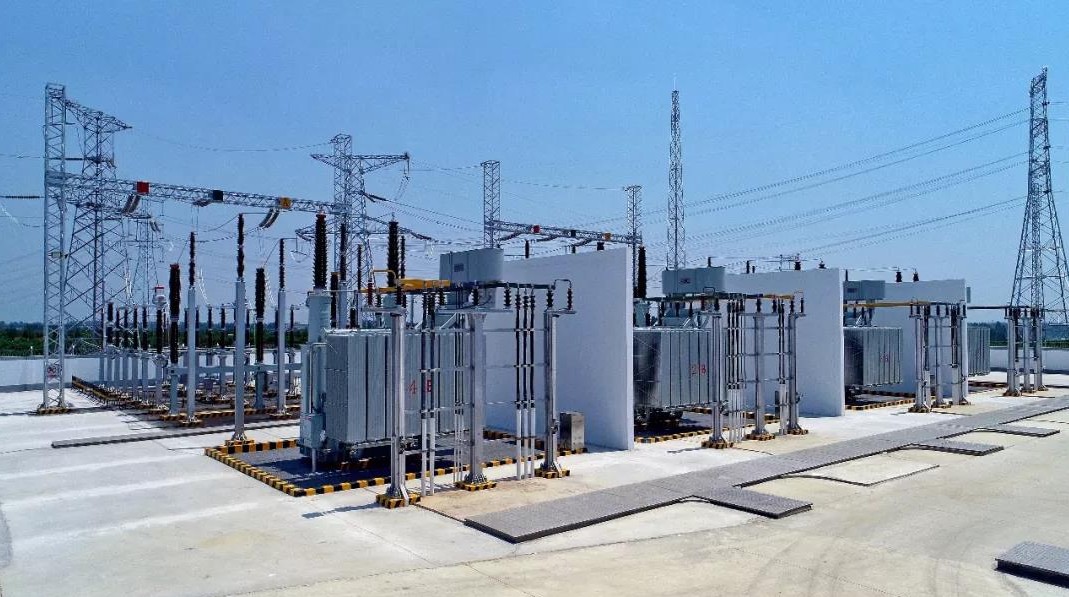The concept of ubiquitous power has increased the demand for online detection equipment of power equipment. Through the detection of sensors,It can effectively identify potential risks of power equipment, thus ensuring long-term and stable operation of power.
What gas sensors will be used in the power industry!? Mainly hydrogen sulfide, ammonia, chlorine, sulfur hexafluoride, oxygen and hydrogen.

Hydrogen sulfide gas---H2S
All places where organic matter accumulates, ferments and decays, such as cable wells, garbage storage pits, septic tanks, sewers, sewage pools, water collecting wells, cellars, biogas pools and alcohol fermentation pools, may produce hydrogen sulfide gas. Hydrogen sulfide gas is soluble in water and has rotten egg smell. Once inhaled, it will cause hydrogen sulfide poisoning and even death. Therefore, for operations that may be exposed to hydrogen sulfide, strong ventilation must be carried out first to escape hydrogen sulfide gas; At the same time, the operation can be started only after the hydrogen sulfide sensor is tested to be qualified; Operators shall also wear air respirators and fasten safety ropes; During operation, supervisors shall be set up on the site, and smoking is prohibited in the workplace.
GY4-H2S is an electrochemical hydrogen sulfide gas sensor. Its main characteristics are good linearity and high accuracy. The conventional range is 0 to 100PPM.
Sulfur hexafluoride---SF6
As an inert gas, sulfur hexafluoride has good insulation performance and stable physical and chemical properties, which makes it particularly suitable for use in electric arc extinguishing scenarios, and is widely used in high-voltage equipment, such as high-voltage switches, high-voltage transformers, closed combined capacitors, high-voltage transmission lines, etc. In particular, SF6 is widely used in high-voltage transformers in power plants. However, SF6 will eliminate oxygen in limited space and pose a hazard to workers entering. At the same time, as one of the greenhouse gas factors, at least half of the sulfur hexafluoride gas produced every year in the world is used in the power industry, and is still growing. It needs to be strictly tested to prevent leakage from polluting the air.
The infrared sulfur hexafluoride sensor is a diffuse SF6 gas sensor and a gas sensor based on the principle of single light source dual-wavelength nondispersive infrared measurement technology (NDIR). The sensor adopts infrared light source and detector, and uses gold-plated device as the optical path turn-back channel, which has good measurement accuracy and stability. It can be widely used in electric power, petrochemical, food processing, semiconductor and other industries, and is applicable to leakage alarm, environmental protection, industrial safety and other occasions.
Oxygen----O2
In the process of safe production or maintenance, the power industry often works in a limited and narrow space. Due to the space constraints, it is likely that there will be gas and harmful gas gathering, which can not spread out well, and also cause oxygen deficiency. At this time, once someone enters, it will bring serious consequences. These processes need oxygen sensors to detect the confined space and check whether the oxygen content in the space is qualified.
GY4-O2, oxygen sensor range is 0 to 30% VOL, suitable for application scenarios with space operation
Hydrogen---H2
The hydrogen-cooled generator unit takes advantage of the good heat transfer and heat dissipation performance of hydrogen, and uses hydrogen as the cooling medium of the generator. It is necessary to detect hydrogen leakage at the generator and at the hydrogen generation station. Hydrogen leakage shall be detected at the generator and hydrogen generation station. GY4-H2, with a range of 0 to 1000PPM, has good accuracy and long-term stability.
Ammonia---NH3
In the process of boiler make-up water treatment, ammonia water is used to adjust the PH value of feedwater, and hydrazine and other chemical deoxidizers are added for chemical deoxidization to prevent corrosion of feedwater system. When the power plant uses selective reduction technology for denitration, it also needs to use ammonia as denitration reducing agent. In this link, it is necessary to detect the ammonia leakage in the ammonia plant, ammonia water and hydrazine storage area.
The range of GY4-NH4 is 0 to 50PPM, which can meet the needs of the scene.
Chlorine---CL2
Power plants often kill microorganisms by adding chlorine to the circulating water to prevent microorganisms from propagating in the condenser and causing heat transfer efficiency reduction and corrosion after scaling. In this link, it is necessary to conduct leakage detection for the chlorine manufacturing workshop and chlorine storage area.
Select GY4-CL2, and the range is 0 to 20PPM. It can meet the requirements of scenario use.
combustible gas
There will be a large amount of combustible gas in the fermenting gas in the cable trench and other scenes. At the same time, the gas power plant uses combustible gas as energy. It is necessary to detect the leakage of combustible gas in the generator set, boiler room, heating furnace, gas pressure regulating station and gas storage area; The fuel oil power plant needs to detect the combustible gas formed by the leaked fuel in the fuel oil storage area.
The range of GYC1201 combustible gas is 0 to 100 LEL, which can effectively detect the gas concentration in the environment.
Ozone gas---O3
The range of the ozone sensor GY4-O3 is 0 to 20PPM. In the power industry, when the equipment fails, the high voltage strikes the air will produce O3 gas. Testing O3 can help judge whether the equipment is safe to operate.
0755-23059646
gysensor@163.com
Hualian Xingye Business Building, Songhe North Road, Songgang Street, Bao'an District, Shenzhen City